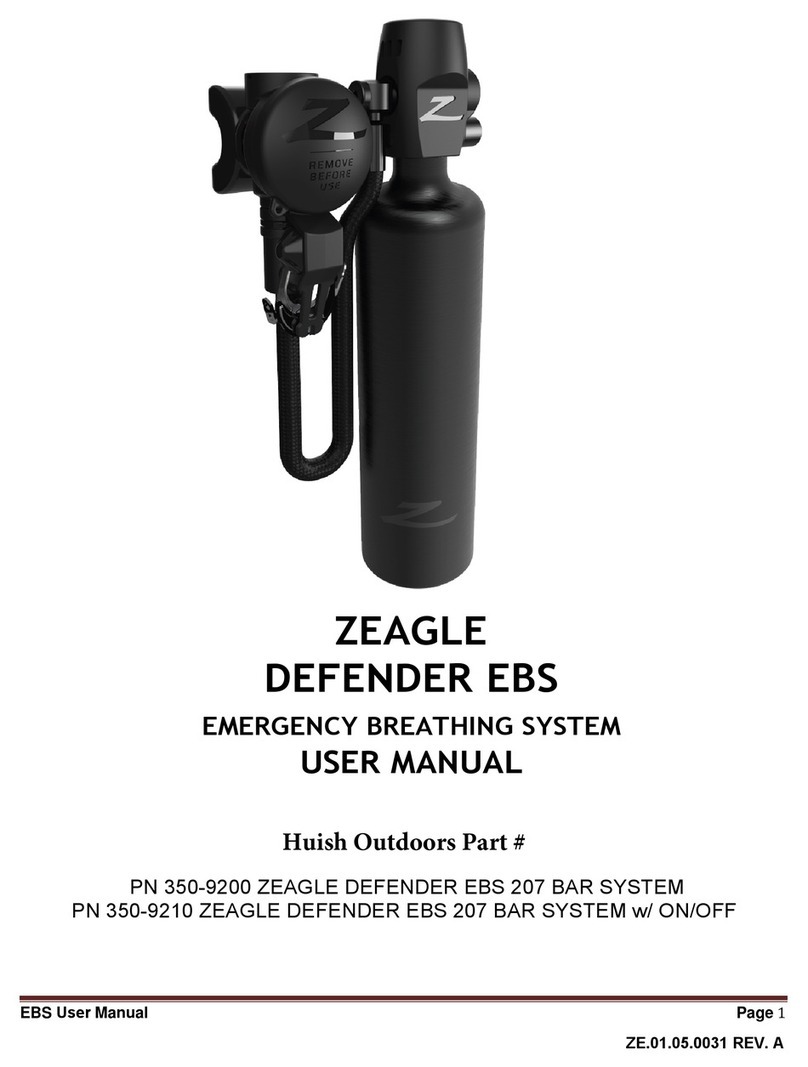
Page 9
EBS PREPARATION FOR IN-SERVICE USE
CYLINDER PRESSURE - The EBS is delivered from the factory fully charged with the valve in the
ON position ready for immediate use. Cylinder pressure must not be less than 310 bar (4500) PSI to
be fully charged. If charging is necessary, refer to the Cylinder Filling Procedure contained in this
manual.
FIRST STAGE ON/OFF PORT -The port must be in the ON position at all times when the EBS is
in service and ready to use.
SECOND STAGE FEATURE - The mouthpiece orientation is adjustable but should only be changed
by a trained service technician. It may be indexed to the user’s preference, but only as a maintenance
option and may not be changed while the unit is in service for immediate use.
SECOND STAGE PROTECTIVE COVER - This device is intended for EBS transit or storage only. It
MUST NOT be installed anytime the EBS is placed in service and ready for use.
DEPLOYMENT OF EBS IN EMERGENCY SITUATION
1. Use one hand to secure your position at the nearest exit escape route. Use your free
hand to grasp the EBS second stage regulator and pull out and away from your body to
ensure hose is free from entanglement.
2. Place your mouth over the mouthpiece and exhale providing a puff of air to clear
residual water that might be inside the second stage housing. Then inhale, lightly at first
to be sure residual water is not present, and then continue to breathe normally. If there
is water present after first exhalation, block the air path in the mouthpiece with your
tongue and press the purge feature on the front of the second stage housing to clear
residual water and then continue to breathe normally, recognizing that the air supply is
limited and expedient travel to the surface is required.
DO NOT HOLD YOUR BREATH. BREATHE NORMALLY. Failure to
exhale lightly and continuously or breathe uninterrupted as you
ascend from even shallow depths can create a hazardous pressure
imbalance in the lungs risking respiratory damage, with the
possibility of serious injury or death.
ZE.01.05.0030 REV. A
EBS User Manual




























